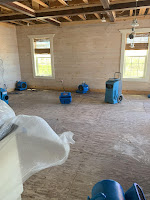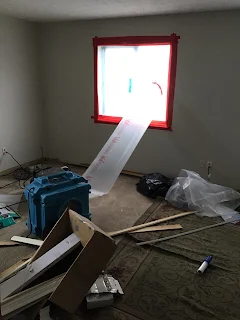Water Damage
What Causes Water Damage?
Plumbing leaks
Broken water heaters
Severe weather
Appliance leaks
Burst or broken pipes and hoses
A clogged toilet
Moisture behind walls
A leaking roof
Foundation cracks
Damaged or inadequate moisture barriers
Water damage can occur from multiple sources, including but not limited to broken water heaters, flooded crawl spaces, or bursts pipes during the winter. Many different sources may go unnoticed for quite some time. However, excess water in your home can promote electrical hazards, cause expensive damage to your home’s structure and furnishings, and can even lead to the growth of hazardous mold. One of the most common sources of water damage is from a flooded basement or a flooded crawl space. A home or building with its contents can be damaged in a short matter of time if the water source or potential damage is not inspected as early as possible.
Why work with Express Damage Restoration?
WE FIX WATER DAMAGE LIKE IT NEVER HAPPENED!
Each day at Express Damage Restoration we focus on returning homes and lives to normal as soon as possible.
We have worked with many remediation processes within our business, we know that each job is different in terms of finding a solution.
We are experts in emergency services!
We work with ALL insurance companies, until the job is complete, and you are satisfied!
As certified water damage restoration specialists, we provide expert help to both residential and commercial owners alike.
We are located in the Mayfield Ky area and are available day or night, 7 days a week for emergency restoration services for water, fire, or smoke damage as well as mold remediation and more!
Any amount of water damage can cause large and small issues inside the home. The sooner the cleanup begins, the sooner the damage can be mitigated.
Working side-by-side with you from the initial phone call to the final fix, we create custom solutions for returning your home and lives to normal










Comments
Post a Comment
Hire Property Damage Solutions Water Damage Restoration Contractors in Richmond, KY. We Offer Affordable Water Damage Restoration Cost for Commercial Water Damage Restoration and Residential Water Damage Restoration in Richmond, KY.
Water Damage can be a devastating event. It can happen to anyone at any time. Water damage can occur as the result of many different things such as a broken pipe, a flood, or even a natural disaster. Regardless of how your water damage occurs, it is important to take care of the Water Damage Restoration Problem as soon as possible. Not only will this help minimize the amount of damage that is done, but it will also help keep mold and mildew from growing. Our Team of Water Damage Restoration Technicians is standing by 24/7 to help you get your life back on track. ☎️ Call 859-302-9666
Water Damage Restoration Richmond - Kentucky
Water Damage Restoration Service in Richmond, KY
Water damage can be a huge headache. Not only does it cause massive destruction, but it can also lead to serious health problems if not treated quickly and properly. Water damage can come from any number of sources a broken pipe, a natural disaster, faulty plumbing, etc. And left untreated, water damage can rapidly become a bigger and bigger problem. Our team of Professional Water Damage Restoration Contractors is highly trained to handle any size job quickly and efficiently. We will work tirelessly to get your home or business back to its original condition as quickly as possible.
Commercial Water Damage Restoration in Richmond, KY
Water damage can be a huge problem for businesses, and it is often difficult to find a reliable and Experienced Water Damage Restoration Company that can provide quality commercial water damage restoration services. Not only is water damage a huge inconvenience, but it can also be incredibly costly to repair. Businesses need a reliable and experienced company that they can trust to provide Commercial Restoration Services. We are a professional commercial water damage restoration company with years of experience in the industry. We provide Best Water Damage Restoration Services in Richmond, KY, and we always put our customers first. Contact us today for more information about our services.
Water Damage Restoration Near Me in Richmond, KY
Water damage can happen to anyone at any time. You might be dealing with a broken pipe, a flood, or even just a little water on the floor. No matter what the cause of your water damage is, its important to take care of the problem as soon as possible. Left untreated, water damage can quickly become worse and lead to extensive repairs. We are here to help you. Our Emergency Water Damage Restoration Services from PDS are available 24/7, and we have fully trained technicians who can take care of everything for you. We will work quickly to get your home or business back to normal.
Water Damage Restoration Near Me in Richmond, KY
Best Water Damage Restoration in Richmond, KY
Water damage can be a huge hassle. It can cause a lot of damage in a short period of time, and the cleanup process is often long and arduous. Not only is water damage costly to repair, but it can also cause health problems if not cleaned up properly. Our Team of Water Damage Restoration Experts offers the best water damage restoration in Richmond, KY. We are available 24/7 for emergency services and our cost is very affordable. We provide commercial water damage restoration, Home Water Damage Restoration, and emergency water damage restoration services in Richmond, KY. Call us at (859)302-9666 for more information about our Best Water Damage Restoration services.
Lexington, KY